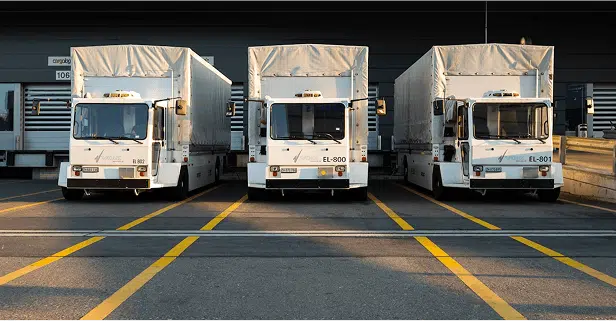Transforming Business Scalability and Efficiency
Understanding Serverless Architecture
What truly distinguishes serverless from traditional cloud hosting is its execution model. In conventional cloud environments, applications run continuously on provisioned servers, consuming resources even when idle. Serverless functions, by contrast, execute only in response to specific events and shut down when their task is complete. This event-driven, ephemeral execution model fundamentally changes both the development approach and the economics of cloud computing.
Benefits of Serverless for Businesses
The adoption of serverless architecture offers numerous advantages that directly impact a business’s bottom line, operational efficiency, and ability to innovate. These benefits have driven the rapid adoption of serverless across industries and application types.
Cost optimization stands as perhaps the most immediately tangible benefit. The pay-per-execution model of serverless computing means organizations pay only for the actual compute resources used during function execution, measured in milliseconds. There’s no need to pay for idle capacity or over-provision resources to handle peak loads. This model can yield significant cost savings, particularly for applications with variable or unpredictable workloads. Many businesses report cost reductions of 60-80% after migrating appropriate workloads to serverless platforms.
Automatic scaling capabilities eliminate one of the most challenging aspects of traditional application hosting. Serverless platforms handle scaling seamlessly, from zero to thousands of concurrent executions and back again, without any manual intervention. This capability ensures applications remain responsive under varying loads while optimizing resource usage. For businesses experiencing seasonal peaks or unpredictable traffic patterns, this automatic scaling removes the need to provision for worst-case scenarios, further enhancing cost efficiency.
Reduced operational overhead represents another significant advantage. With serverless, the cloud provider handles server provisioning, maintenance, patching, and capacity planning. This shift dramatically reduces the operational burden on IT teams, allowing them to focus on higher-value activities rather than routine infrastructure management. Organizations typically report that their operations teams can support 3-4 times more applications after adopting serverless architectures.
Faster time to market accelerates business value delivery. Serverless platforms provide pre-configured environments and managed services that eliminate much of the setup and configuration work traditionally required when launching new applications. Developers can focus on writing code that delivers business functionality rather than configuring infrastructure. This focus, combined with the smaller, more modular nature of serverless functions, enables more rapid development cycles and faster feature delivery.
Popular Serverless Platforms and Tools in 2025
The serverless landscape has evolved significantly since its inception, with major cloud providers and open-source projects offering increasingly sophisticated platforms and tools. Understanding the capabilities and characteristics of these offerings is essential for making informed architectural decisions.
AWS Lambda remains the most widely adopted serverless platform, having pioneered the category in 2014. By 2025, Lambda has evolved into a comprehensive ecosystem with support for numerous programming languages, integration with virtually all AWS services, and sophisticated monitoring and debugging capabilities. Lambda’s strengths include its maturity, scalability, and deep integration with other AWS services like API Gateway, DynamoDB, and EventBridge. Organizations heavily invested in the AWS ecosystem typically find Lambda to be their most natural serverless choice.
Google Cloud Functions has established itself as a strong competitor, particularly excelling in machine learning integrations and global distribution. Its seamless connection with Google’s data processing services like BigQuery and its native support for event sources across the Google Cloud ecosystem make it particularly attractive for data-intensive applications. Google’s emphasis on cold start optimization has also made Cloud Functions a good choice for latency-sensitive workloads.
Azure Functions offers the deepest integration with Microsoft’s enterprise services and development tools. Its support for both consumption-based and dedicated hosting plans provides flexibility for different workload types. Azure Functions particularly shines in hybrid cloud scenarios through its integration with Azure Arc, allowing consistent function deployment across cloud and on-premises environments. Organizations with significant investments in Microsoft technologies often find Azure Functions to be their most natural serverless option.
Beyond the major cloud providers, specialized serverless platforms have emerged to address specific needs. Cloudflare Workers leverages the company’s global edge network to provide extremely low-latency function execution close to users. Vercel and Netlify have built serverless platforms optimized for frontend and Jamstack applications, offering developer experiences tailored to those use cases.
The tooling ecosystem around serverless has also matured significantly. The Serverless Framework continues to be a popular choice for cross-platform deployment and management, while AWS’s Serverless Application Model (SAM) and Azure’s Functions Core Tools provide platform-specific alternatives.
Observability tools like Lumigo, Thundra, and Epsagon have emerged to address the unique monitoring challenges of distributed serverless applications. Development environments have also evolved, with tools like AWS SAM Local and Azure Functions Core Tools enabling local testing and debugging of serverless functions.
Real-World Serverless Implementation Strategies
Successful serverless implementations typically follow certain architectural patterns and best practices that have emerged as the technology has matured. These strategies help organizations maximize the benefits of serverless while mitigating its challenges.
Microservices architecture with serverless functions has become a dominant pattern. By decomposing applications into small, independent services implemented as serverless functions, organizations can achieve fine-grained scalability and resilience. Each function can scale independently based on its specific load, and failures are isolated to individual functions rather than affecting the entire application. This approach also enables teams to work more independently, as each service can be developed, tested, and deployed separately.
Event-driven application design aligns naturally with the serverless execution model. By structuring applications around events and their handlers, developers can create loosely coupled systems where components interact through well-defined event interfaces rather than direct calls. This pattern enhances flexibility and scalability while reducing interdependencies between components. Common event sources include HTTP requests, database changes, file uploads, scheduled triggers, and messages from queuing systems.
Database and storage integration strategies have evolved to complement serverless architectures. NoSQL databases like DynamoDB, Cosmos DB, and Firestore offer the scalability and pay-per-use pricing models that align well with serverless principles. For file storage, object stores like S3 and Blob Storage provide similar benefits. When relational databases are required, serverless-friendly options like Aurora Serverless and Azure SQL Serverless offer capacity that scales automatically with demand.
API development with serverless has become streamlined through services like AWS API Gateway, Azure API Management, and Google Cloud Endpoints. These services handle the routing of HTTP requests to appropriate functions, along with authentication, rate limiting, and other API management concerns. The combination of these API services with serverless functions enables rapid development of scalable, secure APIs without managing any server infrastructure.
Overcoming Serverless Challenges
While serverless offers compelling benefits, it also presents unique challenges that organizations must address to ensure successful implementations. Understanding and mitigating these challenges is essential for realizing the full potential of serverless architecture.
Cold start issues and solutions remain one of the most discussed challenges in serverless computing. When a function hasn’t been invoked recently, the platform needs to initialize a new execution environment before running the code, causing latency known as a “cold start.” By 2025, this challenge has been significantly mitigated through platform improvements and architectural strategies. Cloud providers have optimized their platforms to reduce cold start times, while developers have adopted techniques like function warming (periodic invocation to keep environments active), optimizing dependency size, and using languages with faster startup times. For truly latency-sensitive applications, provisioned concurrency options (available on most major platforms) allow pre-warming of execution environments at a cost.
Monitoring and debugging complexities arise from the distributed nature of serverless applications and their ephemeral execution model. Traditional monitoring approaches that rely on server-level metrics and log aggregation must be adapted for serverless environments. Specialized observability tools have emerged to address these challenges, offering distributed tracing, function-level performance metrics, and intelligent correlation of events across the serverless application. Cloud providers have also enhanced their native monitoring capabilities with features specifically designed for serverless workloads.
Security considerations in serverless differ from traditional applications due to the shared responsibility model and the increased number of components. The attack surface shifts from infrastructure (now managed by the provider) to application code, configurations, and dependencies. Organizations must adapt their security practices accordingly, focusing on secure coding, careful management of permissions, regular dependency updates, and runtime protection. Zero-trust security models have become particularly important in serverless environments, where each function should have only the minimum permissions necessary for its specific task.
Vendor lock-in concerns arise from the deep integration between serverless functions and cloud provider services. While some level of lock-in is often an acceptable trade-off for the benefits of native integration, organizations can mitigate this risk through careful architecture decisions. Strategies include using abstraction layers that isolate provider-specific code, adopting cross-platform deployment tools, and implementing business logic in a provider-agnostic way while using provider services for infrastructure concerns.
Case Studies: Successful Serverless Transformations
Examining real-world implementations provides valuable insights into how organizations are leveraging serverless to address specific business challenges. These case studies illustrate the diverse applications of serverless architecture across industries.
An e-commerce platform migration demonstrates the scalability benefits of serverless. A mid-sized online retailer facing performance issues during seasonal peaks migrated their product catalog and checkout systems to a serverless architecture. The new system automatically scales to handle traffic spikes during promotional events and holiday seasons without any manual intervention. The company reported a 40% reduction in infrastructure costs despite handling 3x their previous peak load, along with improved customer experience due to consistent performance even during high-traffic periods.
A media company’s content delivery optimization showcases how serverless can transform content workflows. The company implemented a serverless pipeline for processing, transcoding, and distributing video content across multiple platforms. Each step in the workflow—from initial upload to format conversion, metadata extraction, thumbnail generation, and distribution—is handled by specialized functions that scale independently based on current demand. This architecture reduced content processing time from hours to minutes while eliminating the need to maintain a complex server infrastructure that previously sat idle between content releases.
A FinTech application scaling success illustrates how serverless can support rapid business growth. A payment processing startup built their transaction processing system entirely on serverless architecture. As their business grew from handling thousands to millions of transactions daily, the system scaled automatically without architectural changes or performance degradation. The company attributes their ability to scale operations while maintaining a small engineering team directly to their serverless approach, which eliminated the need for infrastructure management as they grew.
Future Trends in Serverless Computing
As serverless continues to evolve, several emerging trends are shaping its future trajectory and expanding its potential applications. Understanding these trends helps organizations prepare for the next wave of serverless innovation.
Edge computing integration represents one of the most significant developments in serverless. Cloud providers are extending their serverless platforms to edge locations, enabling function execution closer to users for reduced latency and improved performance. This trend is blurring the lines between cloud and edge computing, creating a continuum where functions can execute in the optimal location based on latency, data locality, and cost considerations. Applications requiring real-time processing, such as IoT systems, gaming, and augmented reality, stand to benefit significantly from this evolution.
AI and ML capabilities in serverless environments have advanced considerably. Cloud providers now offer specialized function runtimes optimized for machine learning inference, allowing models to be deployed as serverless functions that scale automatically with demand. Pre-trained AI services can be easily integrated with serverless functions, enabling developers to incorporate sophisticated capabilities like natural language processing, image recognition, and predictive analytics without managing the underlying ML infrastructure. This convergence is democratizing access to AI capabilities and enabling a new generation of intelligent applications.
Standardization efforts are addressing one of the historical challenges of serverless: the lack of consistency across platforms. The CloudEvents specification has gained widespread adoption for describing event data in a common format, while projects like Knative aim to provide a consistent serverless experience across environments. These standards are reducing the friction of multi-cloud serverless deployments and making it easier to port applications between platforms when necessary.
Conclusion
Serverless architecture in 2025 represents a fundamental shift in how businesses approach application development and deployment. By abstracting away infrastructure concerns and embracing an event-driven, pay-per-execution model, serverless enables organizations to focus more directly on creating business value through code. The benefits—including cost optimization, automatic scaling, reduced operational overhead, faster time to market, and enhanced developer productivity—make serverless a compelling option for a wide range of applications.
Looking ahead, the integration of serverless with edge computing, AI/ML capabilities, and multi-cloud strategies promises to further expand its applicability and value. Organizations that embrace serverless now will be well-positioned to leverage these emerging capabilities as they evolve.
Transform Your Business with Serverless Architecture
At 247Labs, we specialize in helping businesses leverage the power of serverless architecture to achieve unprecedented scalability, efficiency, and agility. Our expert team has successfully implemented serverless solutions across industries, from e-commerce and finance to media and healthcare.
We understand that every organization’s journey to serverless is unique. That’s why we offer comprehensive services tailored to your specific needs—whether you’re looking to migrate existing applications, build new serverless solutions from the ground up, or develop a strategic roadmap for serverless adoption.





